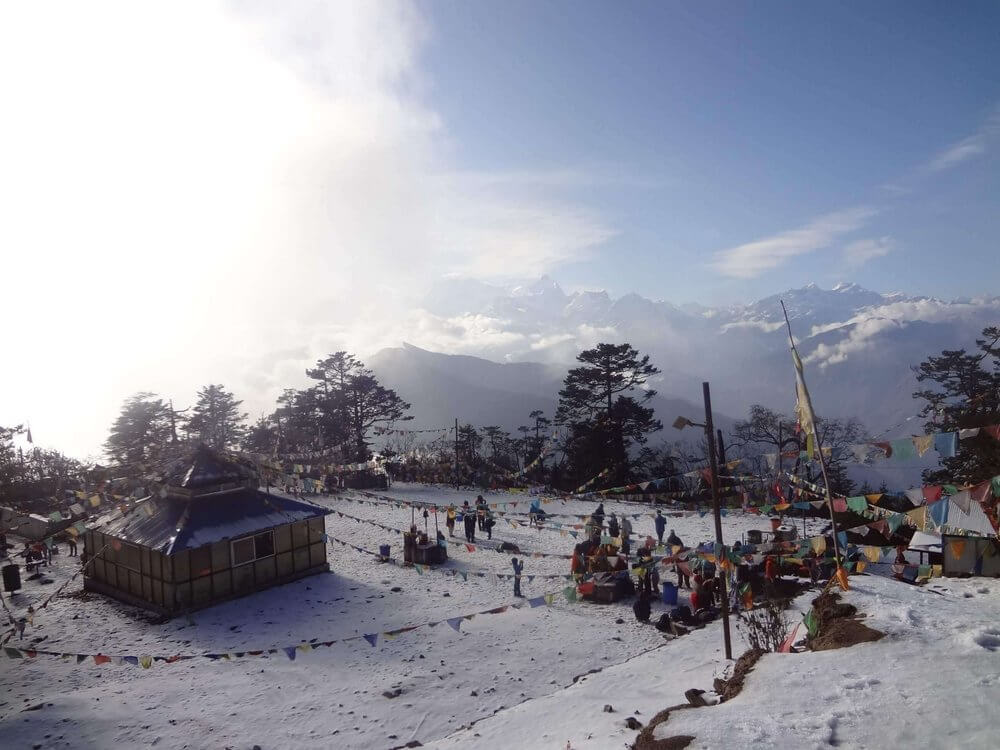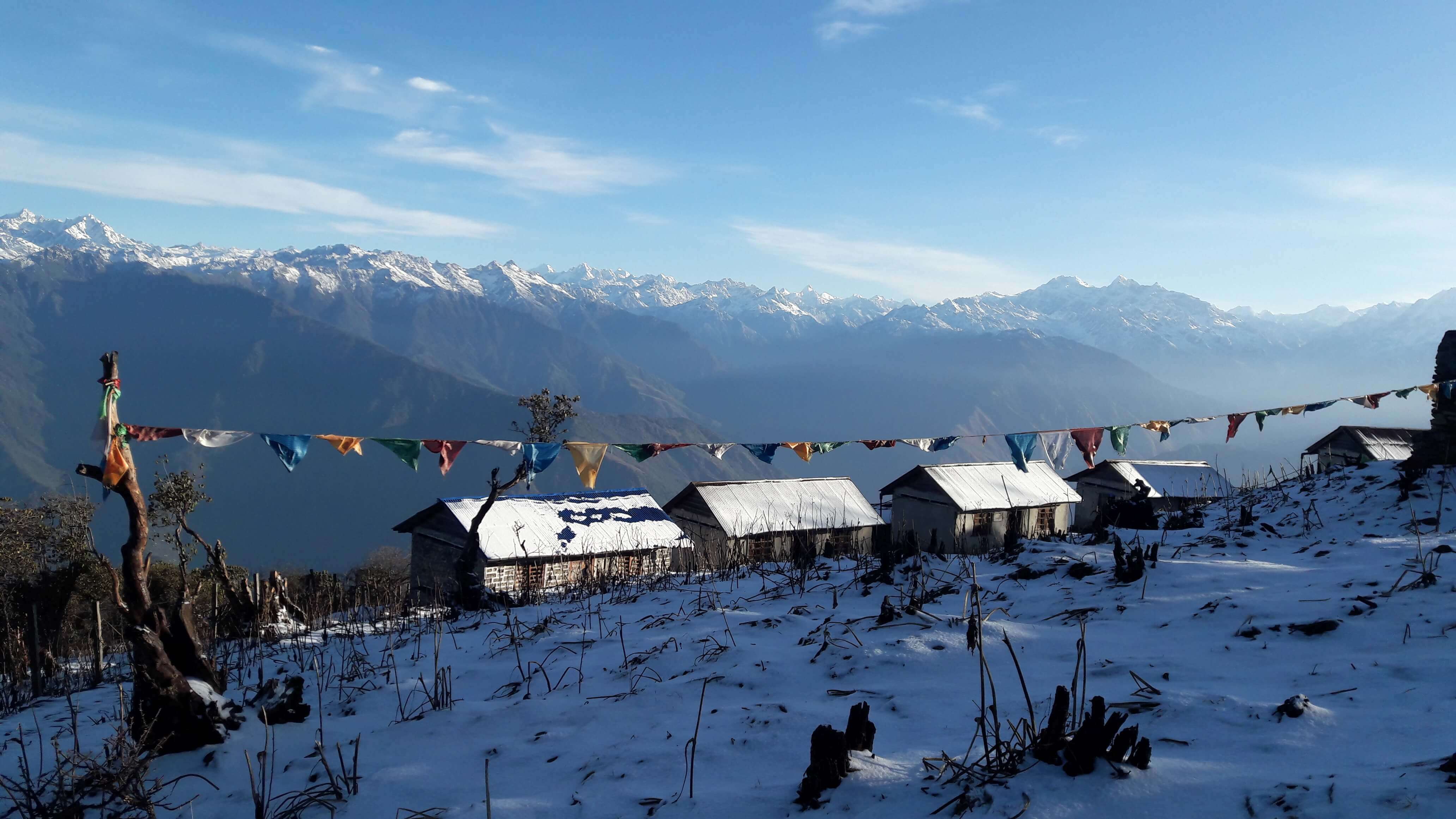Pathivara Temple, nestled high in the majestic Himalayas, is one of Nepal's most revered religious sites. This sacred shrine, dedicated to Goddess Pathivara, has been a beacon of faith for countless devotees across generations. The temple's rich history and spiritual significance make it a destination that transcends time and geography.
Perched at an elevation of 3,700 meters, Pathivara Temple stands as a testament to the enduring devotion of the people of Eastern Nepal and beyond. For centuries, it has been a pilgrimage site that draws thousands of visitors each year, especially during the annual festivals. The temple's history is interwoven with local legends, historical events, and cultural traditions that give it a unique place in the hearts of the faithful.
Understanding the history of Pathivara Temple provides insight into the rich tapestry of Nepalese culture and spirituality. From its humble origins to its current status as a major pilgrimage site, the temple's journey through time is a fascinating story of faith, resilience, and devotion. This article will explore the origins, legends, and historical significance of Pathivara Temple while highlighting its role in contemporary religious life.
Read also:Erome Sophi Rain The Rising Star Of The Digital Era
Table of Contents
- The Origin of Pathivara Temple
- Legends and Myths Surrounding the Temple
- Architectural Features of Pathivara Temple
- Festivals and Celebrations at Pathivara Temple
- Spiritual Significance of the Temple
- Pilgrimage to Pathivara Temple
- Environmental Impact and Conservation Efforts
- Pathivara Temple as a Tourist Destination
- Challenges Facing Pathivara Temple
- The Future of Pathivara Temple
The Origin of Pathivara Temple
Pathivara Temple's origins date back several centuries, though the exact date of its establishment remains shrouded in mystery. According to historical accounts, the temple was first built during the Kirat era, a period that predates the Licchavi dynasty in Nepal. The Kirat people, who are indigenous to the region, were among the earliest devotees of the goddess Pathivara.
Local legends suggest that the temple was initially a small shrine that gained prominence over time due to the miracles attributed to the goddess. As the region developed and trade routes expanded, the temple became a focal point for travelers, merchants, and pilgrims alike. Its location along the ancient trade routes connecting Nepal with Tibet further enhanced its significance as a spiritual and cultural hub.
Historical Context
The historical context of Pathivara Temple is closely tied to the socio-political developments of the region. During the Malla period, the temple received royal patronage, which led to its expansion and renovation. Inscriptions found near the temple provide valuable insights into its historical evolution, highlighting the contributions of various rulers and communities to its upkeep and development.
Legends and Myths Surrounding the Temple
Pathivara Temple is steeped in legends and myths that have been passed down through generations. One of the most popular legends is that of the goddess Pathivara herself, who is believed to have manifested in the region to protect the local people. The goddess is revered for her benevolence and is often invoked for blessings related to health, wealth, and prosperity.
Popular Legends
- According to one legend, the goddess appeared to a local herdsman in a dream and instructed him to build a temple at the site where she was worshipped.
- Another legend speaks of the goddess's miraculous intervention during a severe drought, bringing rain to the parched lands and saving the local populace.
Architectural Features of Pathivara Temple
The architectural design of Pathivara Temple reflects the traditional Nepalese style, with intricate wood carvings and metalwork adorning its structure. The temple is built on a raised platform and features a pagoda-style roof, which is characteristic of many religious structures in the region. Inside, the sanctum houses the main idol of the goddess, flanked by smaller shrines dedicated to other deities.
Construction Materials
The temple's construction materials include locally sourced stone, wood, and metal, all of which contribute to its durability and aesthetic appeal. The use of traditional techniques in its construction underscores the cultural heritage of the region and the skills of its artisans.
Read also:Brian Deegan Net Worth A Deep Dive Into The Life Of An Action Sports Icon
Festivals and Celebrations at Pathivara Temple
Pathivara Temple comes alive during various festivals and celebrations throughout the year. The most significant of these is the Pathivara Jatra, an annual festival that draws thousands of pilgrims from across Nepal and neighboring countries. During this time, the temple premises are filled with devotees offering prayers, participating in rituals, and enjoying cultural performances.
Key Festivals
- Pathivara Jatra: A week-long festival celebrated in the month of August, featuring processions, music, and dance.
- Navaratri: A nine-day festival dedicated to the goddess, marked by special pujas and offerings.
Spiritual Significance of the Temple
Pathivara Temple holds immense spiritual significance for its devotees. It is believed to be a place where the divine and the mundane converge, offering devotees a chance to connect with the divine. The temple's serene surroundings and the aura of sanctity that permeates its precincts make it an ideal location for meditation and introspection.
Prayers and Rituals
Devotees visiting Pathivara Temple perform various prayers and rituals as part of their pilgrimage. These include offering flowers, lighting lamps, and performing aarti, a traditional Hindu ritual of worship. The temple priests guide pilgrims through these rituals, ensuring that they are performed with the utmost reverence and respect.
Pilgrimage to Pathivara Temple
Pilgrimage to Pathivara Temple is a journey of faith and endurance. The trek to the temple, which involves climbing steep terrains and navigating challenging weather conditions, is considered a test of one's devotion and determination. Pilgrims often undertake this journey in groups, sharing stories and experiences along the way.
Preparation for Pilgrimage
- Pilgrims are advised to prepare physically and mentally for the journey, carrying essential supplies such as food, water, and warm clothing.
- Local guides are available to assist pilgrims, providing valuable information about the route and safety precautions.
Environmental Impact and Conservation Efforts
As the popularity of Pathivara Temple grows, so does the environmental impact of increased foot traffic in the region. Efforts are being made to mitigate this impact through sustainable tourism practices and conservation initiatives. Local communities, government agencies, and non-governmental organizations are working together to protect the fragile ecosystem surrounding the temple.
Conservation Initiatives
Some of the key conservation initiatives include waste management programs, reforestation projects, and awareness campaigns aimed at educating visitors about the importance of preserving the natural environment.
Pathivara Temple as a Tourist Destination
Pathivara Temple has emerged as a popular tourist destination, attracting visitors from all over the world. Its stunning location, rich history, and cultural significance make it a must-visit site for those interested in exploring the spiritual and natural wonders of Nepal. Tour operators offer guided tours to the temple, providing travelers with insights into its history and significance.
Tourist Facilities
Basic facilities such as accommodation, dining, and transportation are available near the temple, catering to the needs of tourists. However, visitors are encouraged to respect the sanctity of the site and adhere to local customs and traditions.
Challenges Facing Pathivara Temple
Despite its popularity, Pathivara Temple faces several challenges that threaten its preservation and sustainability. These include environmental degradation, infrastructure constraints, and the need for better management practices. Addressing these challenges requires a collaborative effort involving all stakeholders, including the government, local communities, and tourists.
Possible Solutions
- Implementing stricter regulations to control pollution and waste disposal.
- Investing in infrastructure development to improve accessibility and safety for pilgrims and tourists.
The Future of Pathivara Temple
The future of Pathivara Temple looks promising, with ongoing efforts to enhance its facilities and promote sustainable tourism. As awareness about the temple's historical and cultural significance grows, there is hope that it will continue to thrive as a center of spiritual and cultural enrichment for generations to come.
Conclusion
In conclusion, Pathivara Temple is more than just a religious site; it is a symbol of faith, culture, and heritage. Its rich history, architectural beauty, and spiritual significance make it a destination that deserves to be explored and preserved. We invite you to share your thoughts and experiences about Pathivara Temple in the comments section below. Additionally, feel free to explore other articles on our site that delve into the cultural and spiritual treasures of Nepal.
Data Source: Nepal Tourism Board



